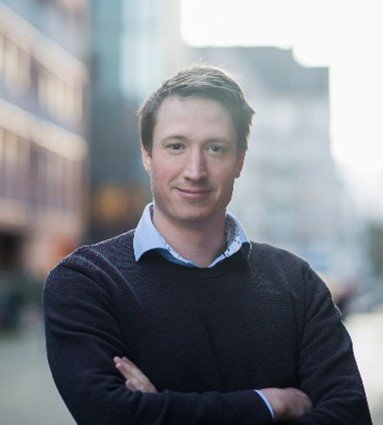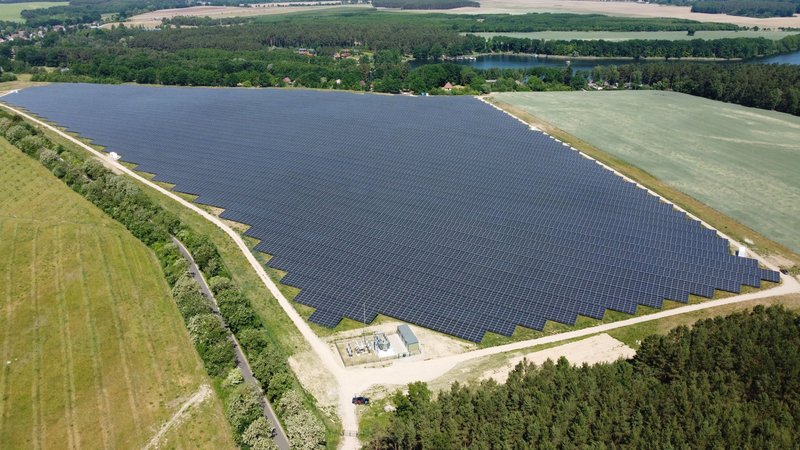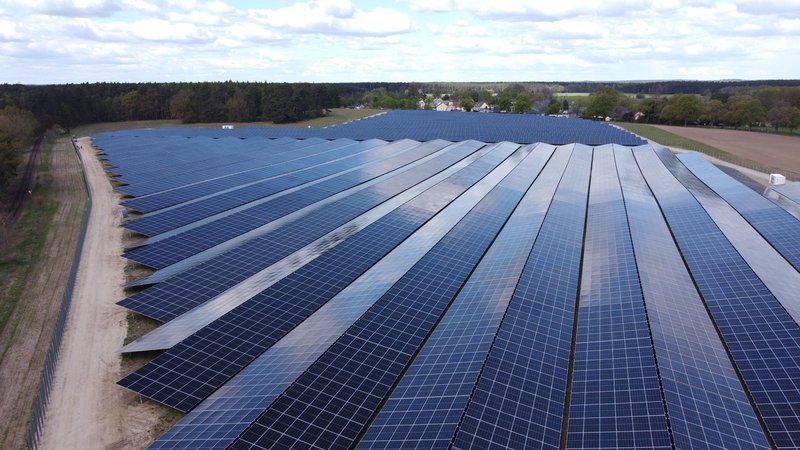Interview with Daniel Pfuhl, Technical Director at Sunovis GmbH
Daniel Pfuhl is the technical director and head of engineering at Sunovis GmbH in Singen, Baden-Württemberg. The company has worked with 8.2 Certification GmbH for over three years. In this interview, Pfuhl explains the challenges he faces with plant certification and the changes he hopes to see in the future to accelerate the energy transition.

Mr. Pfuhl, what does Sunovis GmbH stand for and what are your responsibilities?
Daniel Pfuhl:
At Sunovis, we have comprehensive expertise in developing, planning, and implementing turnkey photovoltaic systems. We oversee projects from land acquisition to construction readiness, manage construction, and handle sales. Additionally, we provide 24-hour operational management for these systems. Our goal is to build and sell high-quality solar parks to maximize yield and profit for both us and our customers. Our photovoltaic projects combine sustainability with the goal of providing a secure, high-yield capital investment. That is why our motto is: "The plus in sun!"
As Technical Director and Head of Engineering, I have been part of the team for over two years and am responsible for all technical matters, in particular for the entire plant design. I am also the central contact person for technical questions in the areas of operations management and engineering, as well as for contract negotiations. Plant certification also falls within my area of responsibility.
Wie sieht Ihr beruflicher Werdegang aus und wie sind Sie zu Sunovis gekommen?
Before taking on the role of Head of Engineering at Sunovis, I began my career at Enerparc AG in Hamburg, one of Europe's leading solar power companies, with a portfolio of 3.5 gigawatts, as far as I know. I began in the commissioning department, where I gained valuable experience in areas ranging from planning and operations management to power lines and substations. I then expanded my experience through various professional positions. Then, about two years ago, Raphael Huber and Markus Renz, the managing directors of Sunovis GmbH, contacted me and offered me the position of Technical Director.
What is your personal motivation for working in this industry?
I entered the industry because I realized that, with climate change and the energy market, things couldn't continue as they were. I wanted to actively make a difference, so I immersed myself in the field. I told myself, "Things can't stay this way. I want to get involved." Of course, my interest in technical professions also played a role. I've always wanted to work in engineering, which is how I ended up in this industry.
Over time, however, I have realized that it's not just about "saving the world," but also about achieving economic success. I particularly like that I have witnessed the industry evolve from climate-neutral electricity with government subsidies to a system that is economically viable. Nowadays, it's not just about producing green electricity; it's also about making it profitable without subsidies. I find that exciting. My main goal, however, remains to replace conventional power plants with renewable energy sources, especially solar energy. I installed solar panels on my roof because I believe it's the right way forward.
What motivates me in particular is the fact that renewable energies are no longer just a niche for idealists, but have now become a completely “normal,” functioning sector of the economy. For me, this is the ideal combination: doing something good and necessary for the climate while at the same time demonstrating that it works economically. It's like killing two birds with one stone. That's what drives me and makes me proud to work in this industry.
What has been your greatest success at Sunovis so far?
My first personal success as Technical Manager at Sunovis was when we commissioned the first park at the beginning of last year, which I had been involved in from the very beginning. I had already successfully completed other projects before, but I was involved in this project, which started in the spring of this year, from the initial planning stage through to construction and commissioning. It's a great feeling to be actively involved in every step of the process and to see that everything works. For me, it was also a big step to move from being responsible for one area to having overall responsibility and then seeing how well the processes fit together.
What do you consider to be the biggest challenges in plant certification?
On the one hand, there is the very large amount of evidence required for the declaration of conformity (DoC). On the other hand, we are constantly striving to optimize plant design so that we do not risk any reduction in active power for our plants during certification. Many things can be clarified in advance, but ultimately the result only becomes apparent with certification.
Creating the DoC becomes particularly difficult when you are dependent on external factors such as network operators. Our own data and plans are not a problem, but when it comes to regulatory tests or documents from the grid operator, we are often dependent on their schedules without being able to speed things up ourselves. It would be helpful to have regulations that allow us to make assumptions after a certain waiting period if no response is received.
This will certainly become an even bigger problem in the future, as network operators are increasingly overloaded, have staff shortages, and are struggling with a growing number of installations. We understand these difficulties, but at the same time, we are then stalling with installation certification. I see this as a massive problem that will continue to worsen in the future. Solutions and regulations are urgently needed to speed up the process without compromising the purpose of installation certification.
Why did Sunovis choose 8.2 Certification for its plant certification?
Long processing times and delayed responses from other certifiers are, in fact, a major problem. We often lack flexibility when dealing with large, highly structured companies. For example, we submit documents and receive a response six weeks later stating that something is missing or needs correction. This wastes a lot of time. Sometimes, a small error is found, such as a transposed number, and then we have to correct it. Weeks have passed again. These periods of time are simply too long for us. If a project takes longer than planned, cost coverage must be clarified immediately before anything else can proceed. This is frustrating because time is a critical factor for us. Often, we receive the final data from the network operator very late, and we urgently need this data for certification and final design. Then time runs out. We often found that other service providers lacked flexibility, even though we made it clear that projects needed to be prioritized urgently. They often responded, "No, we have our timeline, and we have many other customers." With 8.2, however, we have found that things run much more flexibly and quickly.
How have you benefited from working with 8.2 Certification?
We currently work exclusively with 8.2, for two main reasons: firstly, because of the greater flexibility and speed mentioned above, and secondly, because we believe their system is much better structured. The online platform where we can upload all our documents is a huge advantage. Compared to other companies, where you often only receive a list, this is a huge plus point. We particularly appreciate the short official channels. You can simply call, get immediate feedback, and discuss things directly.
Another example is the work on the declaration of conformity. At 8.2, it says: “You have to correct these and those settings.” With other service providers, on the other hand, you often only get the feedback: “You have set this incorrectly.” And then the back and forth begins: “What should we set?” – “You should know that!” – “We can't calculate that.” – “Then just set something!” In short, with 8.2 Certification, collaboration is much easier, more professional, and more effective, which benefits both sides. That's why we enjoy working with 8.2 so much.
How could 8.2 Certification support you even better?
Of course, we would like to have fewer forms to fill out, or for them to be designed a little better in some cases—for example, when long numbers or type designations don't fit properly. Another issue concerns standard systems: we often use the same inverters, modules, and stations, but have to upload and fill out the same documents again and again for each project. It would be desirable to have a system that stores this data, saving work for both sides. It would also be helpful if projects could be released to other planners more quickly, or if we could do this ourselves, so that we could make the allocation more flexible. But overall, these are rather minor areas for optimization. The feedback I receive from my planners is also consistently positive.
In addition, I think customized training courses for our planners would be useful. An introduction to KE certification based on a specific project, in which open questions are clarified and the procedure is explained step by step, would be helpful. Questions often arise, particularly with regard to the forms, where it is not always immediately clear what to enter. Such training courses could provide a great deal of clarity and also speed up the process.
What are your wishes for the future with regard to plant certification?
I hope that the certification process, especially the conformity process, will be accelerated and simplified in the future—whether through legal adjustments or an optimized verification structure. The long processing times at grid operators, who often need six to eight weeks to review a system certificate, are a particular problem. There should be mechanisms in place to circumvent delays caused by grid operators, especially in times of staff shortages. Of course, certification is an important and understandable step, but it must also be an efficient process that is practicable for both grid operators and all other parties involved.


